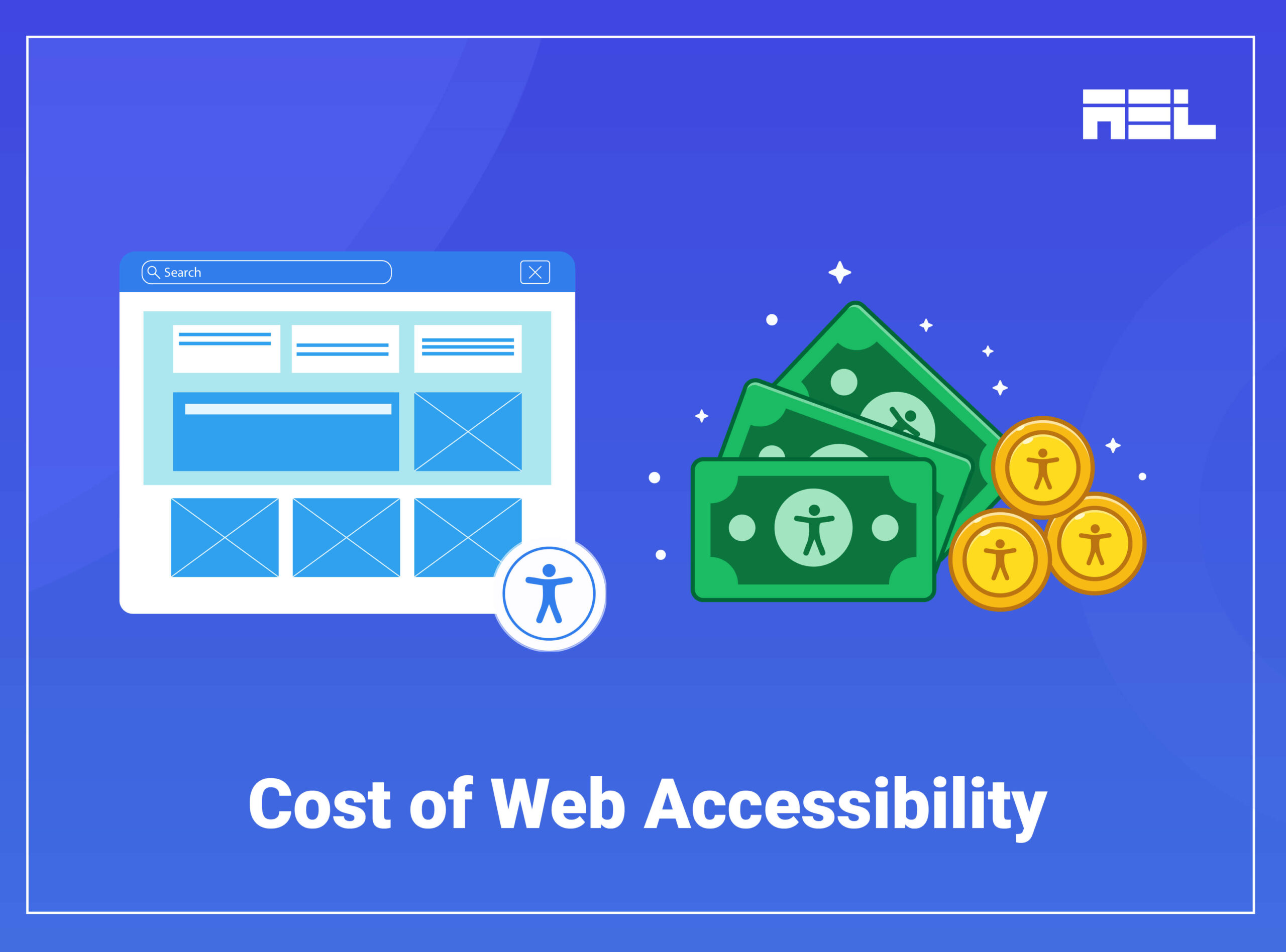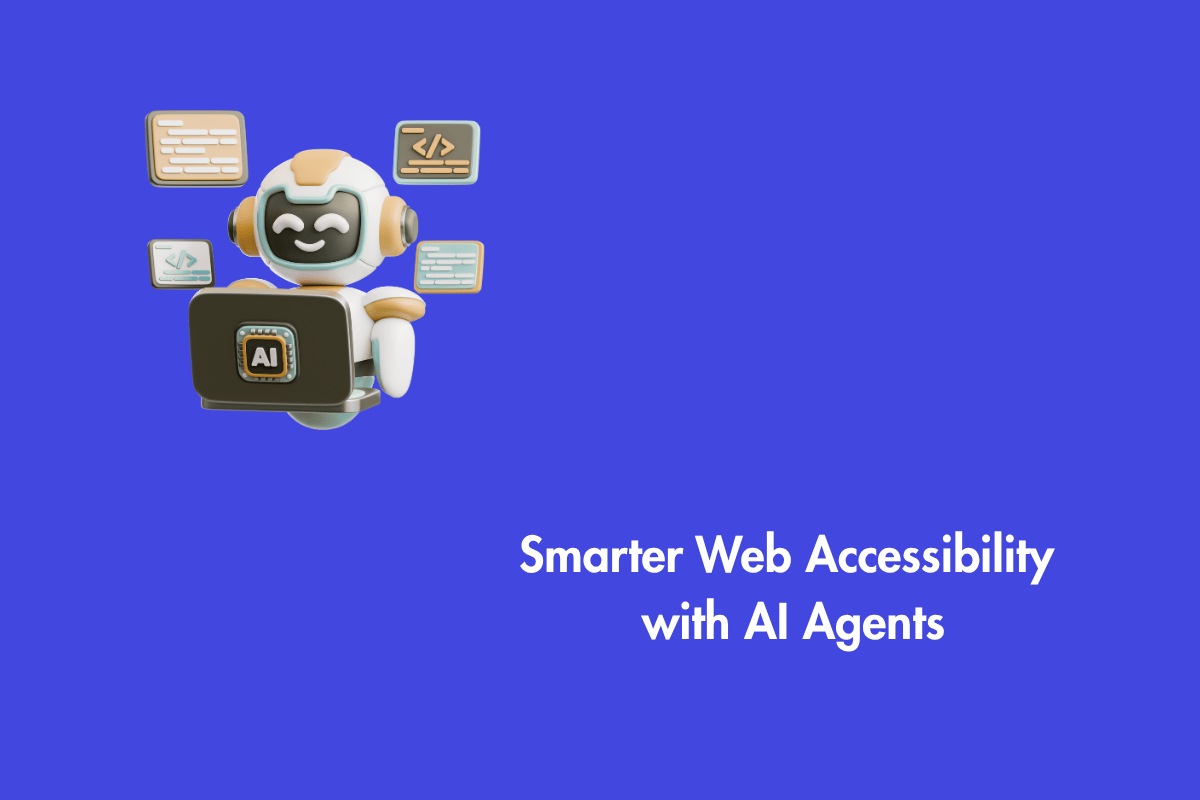Accessibility is as vital to your organization as groceries are to your home. Every home requires a different kind, and accessibility is not a one-stop solution that works for everyone. It needs constant updating and evolving using new technologies. Although accessibility is essential, many organizations have difficulty understanding its costs. Therefore, this article will explore the various concepts related to digital accessibility costs.
Table of Contents
Understanding the Components of Accessibility Costs
Every organization might require a different approach to improve the accessibility of its website. Therefore, to help you get a clear idea about the costs involved, we have divided it into three categories:
- Initial Development and Design Costs
- Maintenance and Ongoing Support
- Legal fees and damages
Initial Development and Design Costs
As the name suggests, this is the initiation stage, where you must accommodate costs like hiring the team and purchasing the relevant products. In the hiring stage, hire people who help you develop and design the website in an accessible way. This also includes employing people who can develop accessible content. Next, in the purchasing stage, accommodate tools to help accessible experts do their job efficiently. The best way to do it is by incorporating accessibility as you begin the project.
Here is a formula by WAI to help you get an estimate of initial development and design tasks:
Initial Development and Design Costs = (Number of Hours x Hourly Rate) + (Number of Tools x Tool Cost) + (Number of Software x Software Cost) + (Number of Hardware x Hardware Cost)
The median hourly wage for web developers in the US was $36.13 in 2019, with an average cost of an essential website of $6,760 in 2020. There are over 100 tools for web accessibility evaluation, 50 software for development, and 20 hardware for testing, ranging from free to paid and basic to advanced.
Using these sources, we can get a rough estimate of the initial development and design costs for a hypothetical digital project:
- Number of Hours: 200 hours
- Hourly Rate: $36.13
- Number of Tools: 5 tools
- Tool cost: $100 per tool
- Number of Software: 3 Software
- Software Cost: $200 per software
- Number of Hardware: 2 Hardware
- Hardware cost: $500 per piece
Initial Development and Design Costs: $10,326
Furthermore, testing and auditing are crucial expenses for evaluating and verifying the accessibility of digital products. These costs include hiring testers, auditors, consultants and purchasing the necessary tools. The cost of testing and auditing depends on the evaluation’s scope, frequency, and methodology.
To optimize costs, it is recommended to conduct testing throughout the development and design process using automated tools, manual checks, and user testing. This ensures product quality and compliance and reduces legal disputes. However, the actual costs may vary based on project details, market rates, and the availability of staff, tools, software, and hardware.
Maintenance and Ongoing Support
An organization incurs maintenance and ongoing support costs during the operation and improvement of a digital product. These expenses include hiring staff, contractors, vendors, and purchasing tools. The trifecta of frequency, complexity, and functionality determines these variable costs.
However, updates or changes can significantly impact them in either direction. For effective cost management, establishing a culture of accessibility is crucial. It necessitates providing training and resources to all involved parties. It helps to set concrete policies and procedures that serve as accessibility standards for the desired outcome. Ensuring sustainability and scalability of the product, along with enhancing user experience and satisfaction, all these factors ultimately guarantee optimal scalability.
Legal Consequences of Non-Compliance
Organizations that do not follow accessibility laws and regulations can experience serious legal consequences. The Web Accessibility Initiative, a World Wide Web Consortium project, highlights that significant money could be spent on legal claims and court cases related to digital product accessibility.
These costs are not just for direct damages but also include additional expenses such as fees of lawyers, payments for mediators, charges of expert witnesses, and any fines set by courts or agreements made outside the courtroom. This puts more financial pressure on the entities that do not comply. The severity and occurrence of breaches can change based on a product’s jurisdiction, law, and regulation.
Organizations must comply with applicable accessibility laws to circumvent fees and damages, including adhering to WCAG guidelines and meeting specific requirements in operating countries or regions. In the US, the Americans with Disabilities Act (ADA), along with Section 508 of the Rehabilitation Act, governs this issue.
ROI of Accessibility Investment
The ROI of a feasibility investment is the benefit or value gained from investing in the feasibility of a particular project. It can be measured in various ways, including increased revenue, reduced costs, improved customer satisfaction, improved brand reputation, and avoiding legal risks.
According to the Web Accessibility business case developed by the W3C, the benefits of web accessibility include:
- Increased market share and audience reach
- Increased customer loyalty and retention
- Increased conversion and retention rates
- Improved search engine optimization and visibility
- Improved usability and user experience
- Increased innovation and creativity
- Reduced development and maintenance costs
- Reduced legal fees and damages
Factors Influencing Accessibility Costs
The factors influencing accessibility costs are the variables that affect the amount and type of resources needed for the accessibility of a digital product. The factors influencing accessibility costs can be classified into internal and external categories.
Internal Factors
Internal factors within an organization or project team include the product’s size, complexity, functionality, required accessibility, staff and vendor skills, tools, software, hardware, policies, and awareness of accessibility. These factors can impact accessibility costs, depending on their management and optimization.
For instance, a large, complex product may have higher accessibility costs but may also have more benefits and value. A high level of accessibility may have higher costs but may also lead to more legal compliance and customer satisfaction. Therefore, internal factors should be carefully considered and balanced to achieve optimal accessibility costs and outcomes.
External Factors
External factors such as the market, competition, laws, trends, and user feedback can impact accessibility costs. These factors affect you, depending on your response.
For instance, large, diverse markets may have higher accessibility costs but offer more growth opportunities, while strict legal environments may provide more incentives and support. Regularly reviewing and updating these external factors is crucial to adapting to changing accessibility costs and expectations.
Budgeting Strategies for Accessibility
Budgeting strategies for accessibility are methods for planning and allocating resources for the accessibility of a digital product. These strategies can help optimize accessibility costs and outcomes, overcome financial challenges, and foster a culture of accessibility within an organization. By incorporating accessibility into a digital product’s initial development and design, the project can avoid the additional costs and time of retrofitting, redesigning, and reworking later on.
This ensures the quality and compliance of the product, as well as user satisfaction and feedback. During development, active testing and auditing can detect accessibility issues early, minimizing legal disputes and user frustration. A culture that prioritizes accessibility within an organization nurtures awareness and sharpens skills.
By harnessing available tools and software, costs are saved, usability is improved, and search engine visibility is significantly boosted. An organization’s demonstration of social responsibility, ethics, diversity, and inclusion often manifests through seeking incentives and support for accessibility. This approach achieves affordability and feasibility regarding accessibility, which is more realistic for digital products and organizations.
Wrapping up
Websites, apps, and other digital products require accessibility to ensure usability for people with disabilities. Accessibility is a moral responsibility, a social obligation, and not just an opportunity but also a legal mandate. However, numerous organizations need help determining the price tag attached to this necessary feature and incorporating it into their budgets.
Prioritize accessibility to increase your reach, mitigate legal risks, and foster the mindset of inclusive technology. AEL Data can assist you in your steps towards a cost-effective accessible website. Email us at info@aeldata.com for more details.



